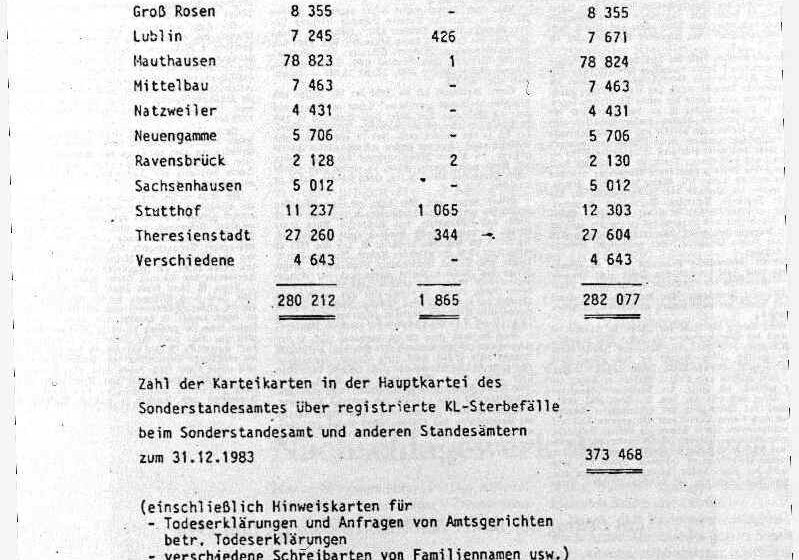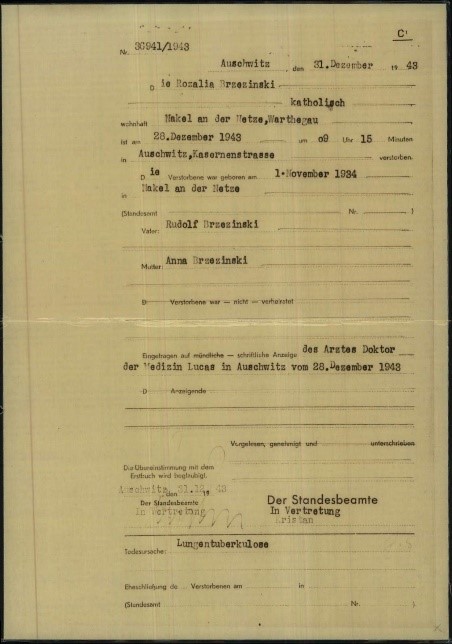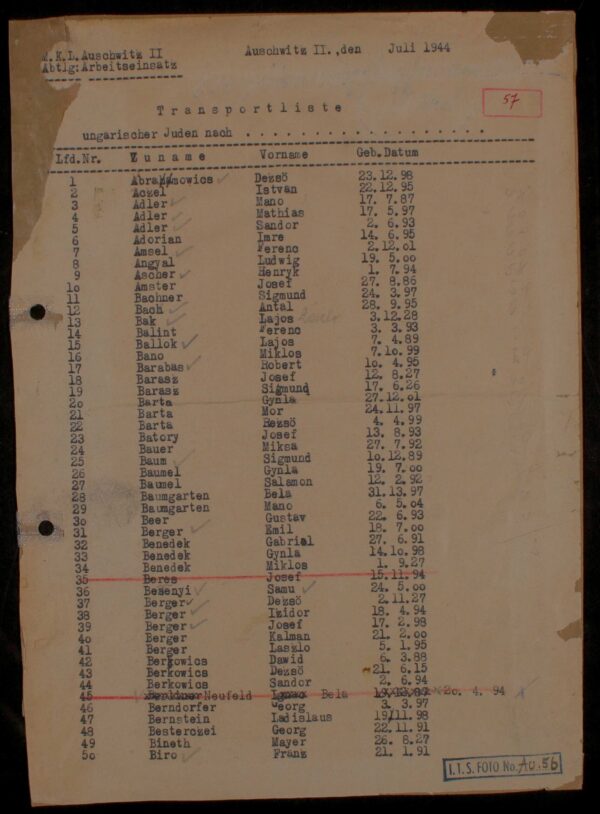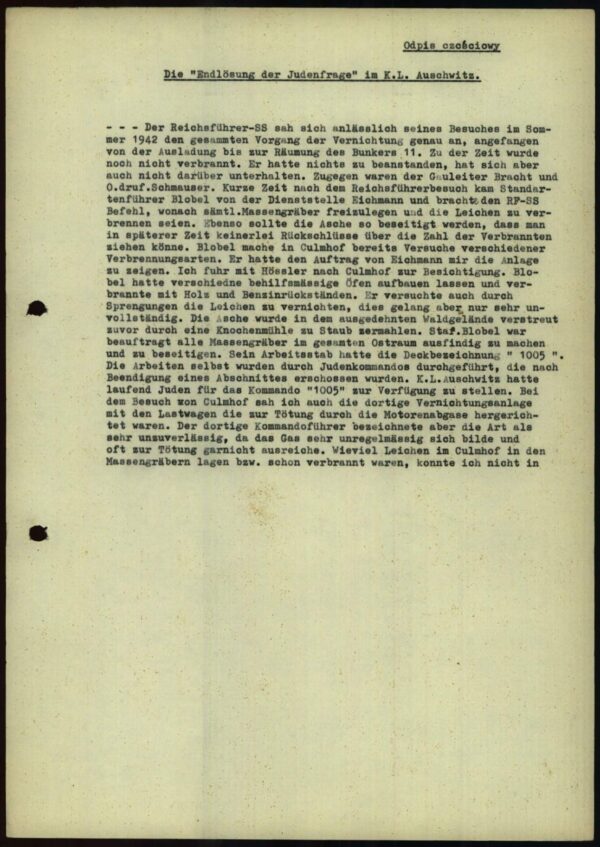Fact check: This document does not relativize the Holocaust!

A document that Holocaust deniers use to relativize the number of victims keeps popping up on social media. The Arolsen Archives are cited as one of the sources. The document is genuine and comes from the Special Registry Office in Bad Arolsen. It lists the numbers of death certificates issued upon application for prisoners from concentration camps, such as Dachau, Buchenwald, and Bergen-Belsen. The figures do not include the millions of Jews murdered in extermination camps like Auschwitz-Birkenau or those who died in mass shootings.
The Holocaust is one of the most well-researched historical events. There is widespread agreement among scholars that six million Jews were murdered during the Nazi era. Neither the Arolsen Archives nor the Special Registry Office in Arolsen are authorized to confirm or substantiate this figure. The document dated January 16, 1984, is regularly cited by Holocaust deniers. It provides information on the number of prisoners murdered in German concentration camps for whom death certificates were issued retrospectively by the Special Registry Office. Set up in 1949, the Special Registry Office in Bad Arolsen is the only body authorized to issue death certificates for people who died under these circumstances.
Every death certificate requires lengthy research
Death certificates are issued upon receipt of an application from the next of kin when there is sufficient documentation of the death of the person concerned. The Arolsen Archives, who hold information on the fates of around 17.5 million people, help the Special Registry Office to find the required documentation.

Example of a death register entry for a deceased concentration camp inmate. If documents containing personal data are available, like this one here, the Special Registry Office can issue a death certificate to the next of kin.
Thanks to meticulous research, the Special Registry Office has been able to register several hundred thousand deaths up until now. The office still receives applications from the relatives of deceased prisoners, and staff continue to issue death certificates to this day. Up to 1,000 new certificates are issued every year. The death certificates issued up until 1986 are available for public inspection.
Why so “few” certified deaths?
The Special Registry Office can only issue death certificates for a fraction of those who were murdered by the National Socialists. The office is not responsible for confirming the deaths of people who died in ghettos, people who were murdered in extermination camps, or people who were killed in mass shootings. Moreover, hardly any documentation survived from some of the concentration camps. The Arolsen Archives only have very incomplete records from Neuengamme, Auschwitz, Groß-Rosen, and Sachsenhausen, for example.
Millions of nameless victims
Although the Nazis documented their crimes with unprecedented bureaucratic zeal, they did not register the names of the Jews who were murdered in the extermination camps. Death registers were not kept in the killing factories, and many of those documents that did exist were destroyed shortly before the camps were liberated. Nevertheless, witness statements and transport lists shed light on the scale of the systematic killing.


Statement given by Rudolf Höss (right), commandant of the Auschwitz concentration camp. In it, he describes the systematic extermination that took place at Kulmhof concentration camp. Later, Höss was ordered to murder the Hungarian Jews. Over 400,000 people were deported to Auschwitz-Birkenau by train. Most of them died in the gas chambers immediately upon arrival between May and July 1944. Only a few transport lists have been preserved.
Scholars do not doubt the six million figure
Holocaust deniers misrepresent the figures in the document that accurately records the number of death certificates issued by the Special Registry Office. While there is no one document from the period that states how many people the Nazis killed, rigorous research carried out over a period of around 70 years leaves no room for doubt. Conclusive evidence of the mass murder of six million Jews comes from various sources, including personal testimonies, demographic research, and archival material. The Nazis began to use extermination camps with gas chambers in 1941. The first one was located in Chełmno, Poland. Millions of human lives were exterminated there – and later in Belzec, Sobibor, Treblinka, Auschwitz-Birkenau, and Lublin – far from the eyes and ears of people in the German Reich. The Nazis also persecuted and murdered their political opponents, Sinti and Roma, homosexuals, people with disabilities, Jehovah’s Witnesses, and others. The latest findings on the number of victims of the Holocaust and Nazi persecution are documented in detail here: How many people did the Nazis murder? | Holocaust Encyclopedia (ushmm.org). The online archive of the Arolsen Archives also sheds light on the scale of the crimes committed by the Nazis between 1933 and 1945. The records it contains – lists of deportees and millions of documents about individual prisoners held in concentration camps, ghettos, prisons, and other Nazi detention sites – document the persecution suffered by the Nazis’ victims. (Search in the documents held by the Arolsen Archives arolsen-archives.org)

